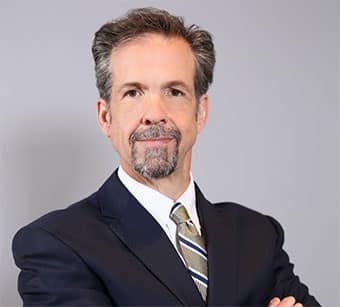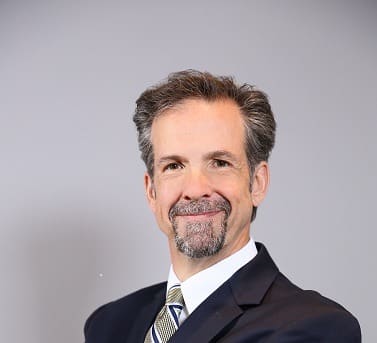If you live, work, or commute through STATION NORTH (21201), you know this vibrant arts district runs on movement—trains at Baltimore Penn Station, buses along North Avenue, cyclists on the Maryland/Charles pair, and heavy foot traffic around venues and studios. That mix is exactly where preventable happen. As a Baltimore personal injury lawyer who has handled, settled and litigated countless claims across Central Baltimore, my goal here is simple: give you a step-by-step, neighborhood-specific guide so you know what matters most if a crash or injury disrupts your life in STATION NORTH, 21201. For background on my practice and approach, see my About page, and if your case involves a vehicle collision, start with the Baltimore Car Accident Lawyer resource hub.

Where is STATION NORTH in Baltimore?
STATION NORTH sits in Central Baltimore, spanning roughly 104 acres anchored by North Avenue and North Charles Street, with Baltimore Penn Station at its southern edge and connections into Charles North, Greenmount West, and Barclay. It’s officially recognized as an Arts & Entertainment District—a designation administered statewide—known for galleries, performance spaces, public art, and adaptive reuse of historic buildings.
What makes STATION NORTH unique?
- Multimodal hub: The presence of Amtrak/MARC at Penn Station, frequent buses on North Avenue, and protected bike lanes along the Maryland/Charles corridor create constant mixing of travel modes in a compact area. That benefits access—and increases conflict points.
- One-way couplets: Charles Street (Maryland Route 139) and St. Paul Street (part of Maryland Route 2) form a one-way pair near the district. One-way corridors change sightlines, speed expectations, and turning behavior—issues that matter in proving fault.
- Regional connection: Ramps to the Jones Falls Expressway (I-83) sit just west/southwest, feeding commuter traffic to and from the district. Congestion waves and sudden merges can lead to rear-end and sideswipe collisions.
- Arts/venue activity: Night and weekend events increase pedestrian volumes and mid-block crossings along North Avenue and North Charles, sometimes overlapping with peak rideshare pickup zones.
- Active street upgrades: Projects along North Avenue and around Penn Station have aimed to improve bus priority, lighting, and crossings—changes that can alter where and why crashes cluster over time (e.g., stop spacing, turn restrictions, or signal timing).
Local flavor that matters in Injury and Accident claims
- Transit density: Penn Station’s arrivals/departures compress traffic at event times. If you’re involved in a collision near the station, CCTV/transit cameras or operations logs may support your reconstruction—ask your personal injury lawyer in STATION NORTH, 21201 to preserve nearby video quickly.
- Protected bike lanes: The Maryland/Charles cycle facilities mean unique “mixing zones” where drivers cross bike paths to turn. Understanding these treatments—and whether markings were present and visible—can be most important to liability analysis in bicycle or scooter cases.
- Commercial delivery windows: Venues and restaurants often receive deliveries at predictable hours. A double-parked box truck that forces lane shifts can be the precipitating factor in a sideswipe crash; witness statements and time-stamped receipts help prove it.
- Rideshare concentration: At showtimes, rideshare pickups on North Avenue and N. Charles St. can increase U-turns and abrupt stops. This creates classic rear-end scenarios where following distance and attention are scrutinized.
- Proximity to I-83: Near-ramp collisions often require careful analysis of merging duty, signaling, and lane choice—your lawyer should request traffic signal/phase data or geometric plans if an intersection is involved.
Station North Neighborhood-specific accident challenges
- Visibility: Long, straight segments encourage higher speeds; meanwhile, parked vehicles near crosswalks can create “sightline shadowing,” especially at dusk.
- Confusing geometry: One-way pairs and offset intersections (e.g., angled cross streets) produce unexpected turning paths and pedestrian desire lines.
- Event timing: Case evidence often lives in calendars—show schedules, gallery openings, school semester calendars (e.g., University of Baltimore), and Penn Station timetables corroborate crowd conditions.
- Data context: City crash data shows collision calls ebb and flow by corridor. Open Baltimore publishes multiple datasets (e.g., crash/911 indicators) useful to locate hotspots along North Avenue and Charles/Calvert. Your attorney should align facts with these sources.
Station North Neighborhood Local Resources [you actually use]
Cultural and civic infrastructure shapes risk and recovery. Station North Arts District event calendars, University of Baltimore semester traffic, and neighborhood associations (e.g., Greenmount West Community Association) provide context, community contacts, and safety initiatives you can reference if you need witnesses or location details in a claim.
A: It’s Central Baltimore, just north of downtown, anchored by North Avenue and Charles Street near Baltimore Penn Station.
A: Yes—Maryland/Charles Streets have featured protected facilities near and south of the district, affecting turning behavior and driver duties at mixing zones. As always, check current condtions.
A: Event peaks can concentrate pedestrians and rideshare traffic along North Avenue/Charles Street—timing matters for liability and for locating video witnesses.
A: Open Baltimore publishes crash/call indicators; statewide safety initiatives appear at ZeroDeathsMD.
STATION NORTH Roadways and Intersections
Is the neighborhood known for serious crashes? Well, any dense, mixed-mode corridor with an interstate ramp and a major rail hub will show recognizable patterns—rear-ends during queueing, turning conflicts where cars cross bike lanes, and pedestrian incidents near night venues. The key is often stitching together where, when, and why using maps, camera sources, and geometric plans.
Station North: Major roadways you should know
- North Charles Street (MD-139) – signature north–south spine linking Penn Station to Midtown and beyond; one-way pairing with St. Paul affects lane choice and turns.
- St. Paul Street (part of MD-2) – carries substantial inbound traffic; north of downtown it runs as the pair to Charles/Calvert; watch right-turns across bike lanes.
- Jones Falls Expressway (I-83) – ramps and merges near the district compress speeds quickly; classic rear-end risk when queues form.
Station North: High-friction intersections and why they can matter
- W. North Ave & N. Charles St – turning traffic meets bus activity and heavy foot crossings at peak arts/events.
- W. North Ave & St. Paul St – one-way geometry plus lane changes create abrupt lateral movements.
- Mount Royal Ave & N. Charles St (Penn Station area) – regional arrivals/departures, multi-leg geometry, and pick-up/drop-off turbulence.
Station North: Why accidents can happen here
- Turning across facilities: Did a driver cross the protected bike lane at a marked mixing point? Are lane markings/signs visible in your photos?
- Queue shockwaves: Approaching an I-83 ramp or signalized pinch point, did the following driver maintain a safe interval?
- Commercial curb activity: Double-parking that forces sudden lane shifts can assign fault to the driver who fails to ensure the adjacent lane is clear.
Step-by-step: What to do after a crash in STATION NORTH
- Call 911 and request police and EMS if injured; get the incident number.
- Document the scene: photos of lanes, signs, crosswalks, curb activity, and any bike-lane mixing markings.
- Identify cameras: Penn Station, buses, nearby venues, and private buildings; note addresses and angles.
- Get medical evaluation: where warranted the same day, then follow the treatment plan.
- Preserve evidence: request nearby footage
- Notify insurers cautiously; consider counsel before giving recorded statements.
- Call a lawyer who regularly handles Station North Central Baltimore claims.
STATION NORTH Resources
- Station North Arts District – district overview, events, and programs: https://www.stationnorth.org/
- University of Baltimore (UBalt) – Central Baltimore campus influencing local traffic patterns and schedules: https://www.ubalt.edu/
- Greenmount West Community Association – neighborhood advocacy adjacent to Station North: https://greenmountwest.org/
- Maryland State Arts Council – A&E Districts – state context for arts district policy: https://msac.org/
- Baltimore City Open Data (Open Baltimore) – crash and public safety indicators: https://data.baltimorecity.gov/
How to Get to Eric T. Kirk
- Steps (Driving):
From the W. North Ave & N. Charles St area, head south on N. Charles St.
Turn left on E. Madison St.
Turn left on N. Calvert St.
Continue to 1001 N. Calvert St (entrance on N. Calvert).
Tip: Street parking varies; allow time for garage or metered parking.
Steps (Transit): - From Penn Station, walk to Mt. Royal & Charles or North Ave bus stops.
Take a southbound bus toward downtown; exit near E. Madison St / N. Calvert St.
Walk to 1001 N. Calvert St. - Steps (Walk/Bike):
Use the Charles/Maryland bike facilities heading south.
Transition to E. Madison St, then to N. Calvert St.
Arrive at 1001 N. Calvert St.

Client Review
"Eric Kirk was a great attorney to me. He settled my personal injury case in about 5 short months, and handled my complicated situation with professionalism and a great attitude. Eric handled everything with the insurance companies, and I didn’t have to lift a finger. I am so grateful for the work Eric put in, and it won us my case! I would recommend Eric’s firm to anyone in need of an awesome attorney. Thank you Eric!"
C. Delaney



